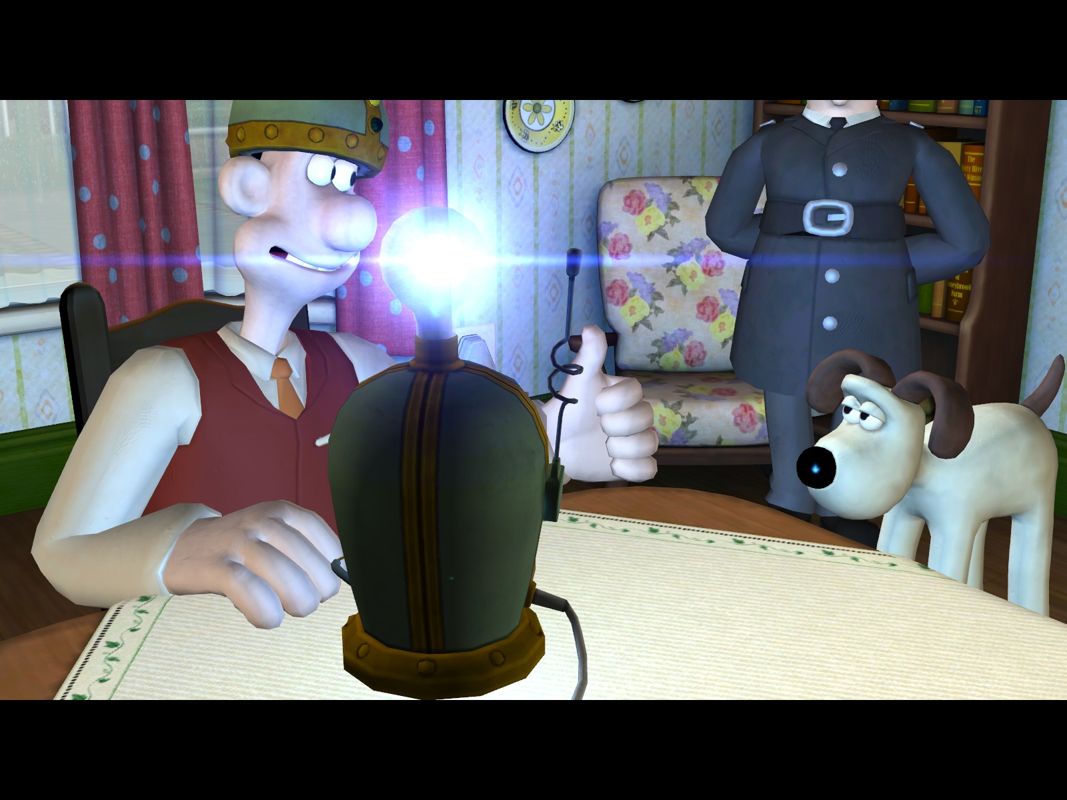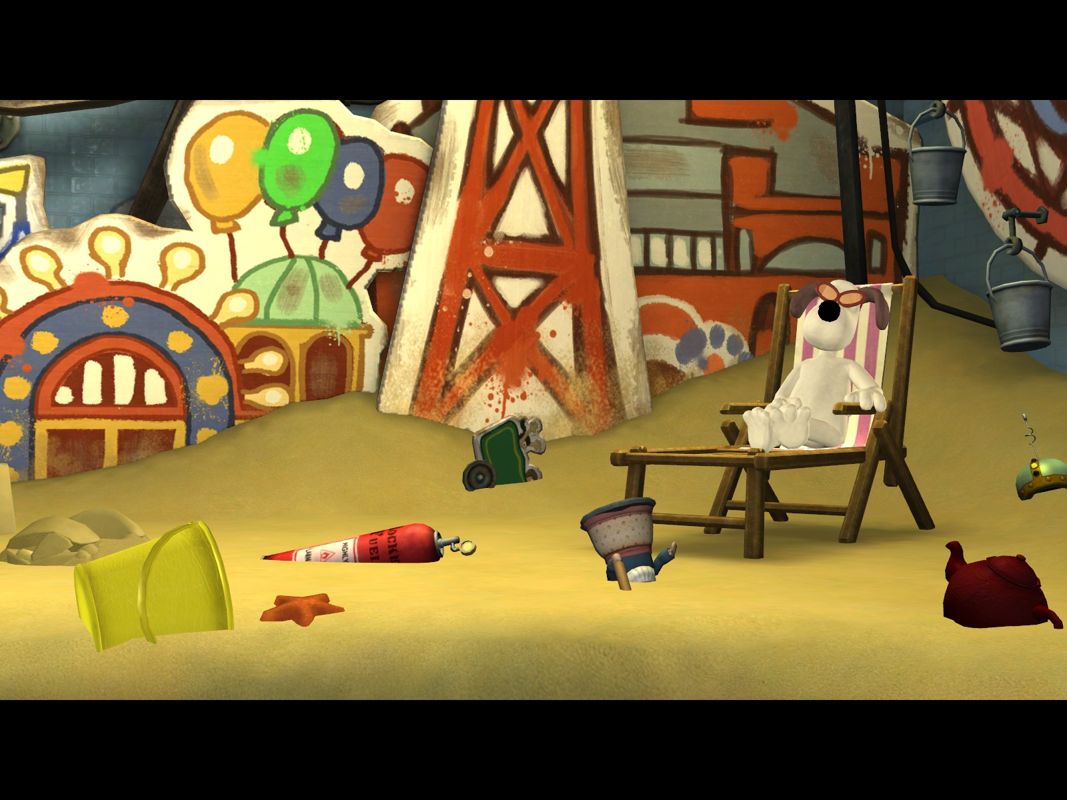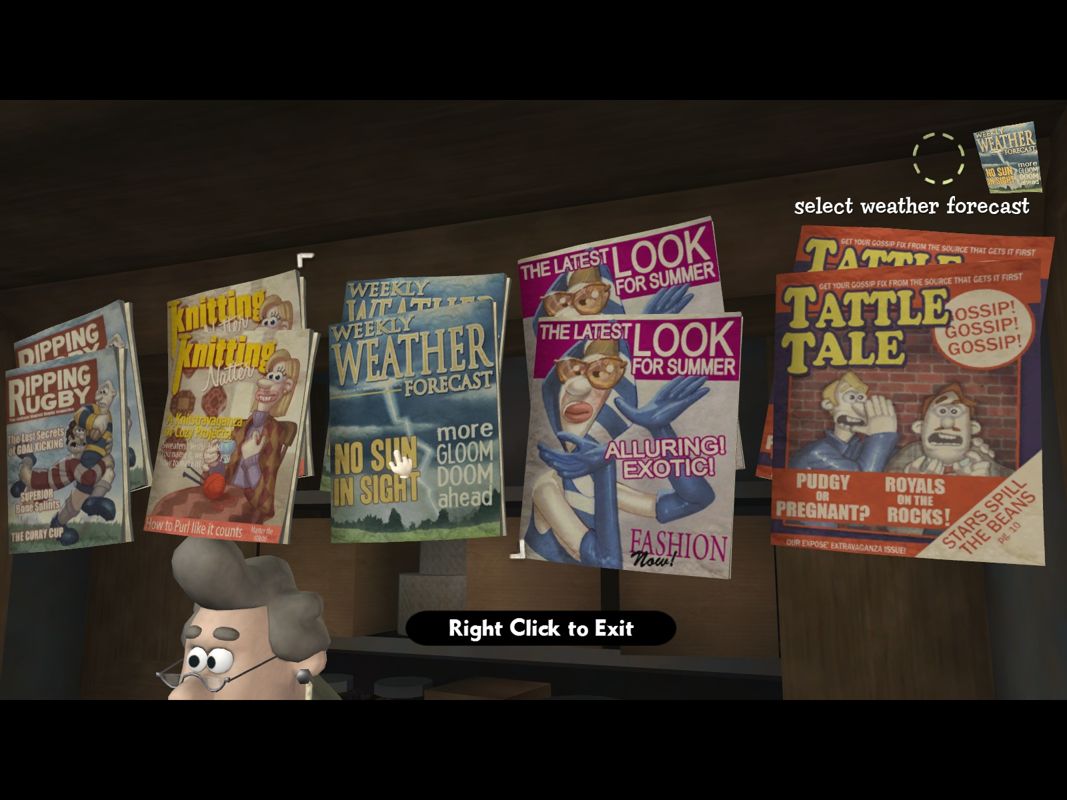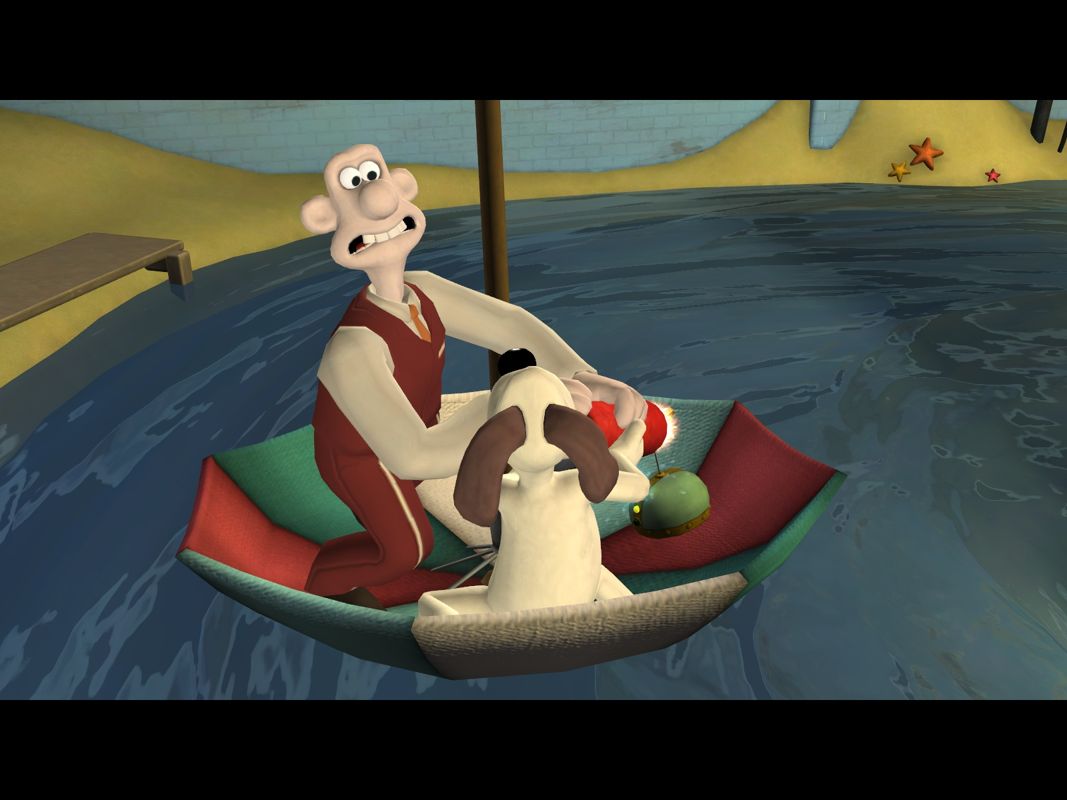Retro Replay Review
Gameplay
Wallace & Gromit in The Last Resort delivers a refreshing twist on the classic point-and-click formula by introducing direct character movement alongside a context-sensitive cursor. Instead of clicking to move Wallace or Gromit to a location, you guide them with analog-style controls, making exploration feel more immediate and intuitive. This hybrid approach works seamlessly on both PC and console, so whether you prefer a mouse or a gamepad, the experience remains smooth and accessible.
(HEY YOU!! We hope you enjoy! We try not to run ads. So basically, this is a very expensive hobby running this site. Please consider joining us for updates, forums, and more. Network w/ us to make some cash or friends while retro gaming, and you can win some free retro games for posting. Okay, carry on 👍)
Puzzle design is at the heart of The Last Resort, and here the developers have struck a fine balance between logic challenges and lighthearted whimsy. Many puzzles require combining seemingly mundane objects—like buckets, seashells, or bits of tubing—to recreate a mini-beach in the flooded cellar. As the story dictates who you control, you’ll often find yourself switching perspectives between Wallace’s inventive mind and Gromit’s pragmatic problem-solving, though the transitions are automatic rather than player-initiated.
The pacing of the game is thoughtfully calibrated to maintain engagement without overwhelming newcomers to the genre. Early tasks, such as shutting off the leaking water main and weatherproofing the entrance, serve as gentle tutorials. As you progress, puzzles grow more involved—engineering a makeshift wave machine, calibrating sluice gates, and even convincing neighbors to test the new Waterworld attraction. Each challenge feels rewarding, thanks to clear visual feedback and a forgiving hint system that nudges you back on track when you get stuck.
Graphics
Graphically, The Last Resort pays charming homage to Aardman’s signature claymation style through rich, hand-painted textures and expressive character models. While the game uses 3D environments, the designers have carefully preserved the tactile feel of real clay figures: you can almost see fingerprint indents on Wallace’s cheeks and the furrows in Gromit’s knitted sweater. This attention to detail elevates the visual experience beyond typical adventure fare.
Environments are vibrant and full of character—from the cozy clutter of Wallace’s basement workshop to the slippery, waterlogged corridors that lead to their underground beach. Dynamic water effects shine, with realistic ripples and splashes that react believably as you pour, pump, and splash your way through each scenario. Subtle lighting changes throughout the episode also enhance mood, such as warm lamplight in evening cutscenes or the cool, drippy glow of the flooded cellar.
Cutscenes and character animations stand out as especially delightful. Wallace’s wide-eyed enthusiasm and Gromit’s arching eyebrows come alive in short, comedic interludes that bridge puzzle segments. Voice performances are on point—Peter Sallis reprises his role as Wallace with trademark enthusiasm, and the musical score underscores the action without ever feeling intrusive. Overall, the graphical presentation is polished and bursting with personality.
Story
The Last Resort picks up on the cheerful absurdity of Wallace & Gromit’s world by turning an ordinary plumbing mishap into an all-out beach resort project. When the water main bursts and their cellar floods, Wallace seizes the opportunity to bring seaside fun to West Wallaby Street. Soon, heavy rain delays their dream vacation—but why wait when you can build your own Waterworld right at home?
Humor permeates every line of dialogue, thanks to witty writing and charming interactions with a cast of colorful locals. As Wallace hatches increasingly elaborate contraptions, Gromit’s raised eyebrow reactions provide a perfect counterpoint. Conversations with neighbors—who range from skeptical to downright excited—help expand the world beyond the central duo, making the street feel like a living, breathing community.
The narrative unfolds in distinct stages, each tied to a major puzzle set-piece. This episodic structure offers a satisfying rhythm: you solve one major challenge, watch a short cutscene, then move on to the next inventive scheme. While the story remains light and humorous throughout, it builds toward a climax that showcases both Wallace’s boundless optimism and Gromit’s quiet ingenuity, ensuring fans of the franchise will feel right at home.
Overall Experience
Wallace & Gromit in The Last Resort stands out as a playful, warmly crafted adventure that balances puzzle complexity with broad family appeal. Its clever control scheme, which marries direct movement with context-sensitive interactions, makes it accessible to adventure veterans and newcomers alike. Puzzles are imaginative without becoming exasperating, and the hint system ensures you never feel completely stuck.
Fans of Wallace & Gromit will relish every visual nod to the beloved stop-motion shorts, while newcomers will be drawn in by the game’s irresistible charm and comedic timing. The episode’s moderate length—typically around four to six hours—feels just right, offering enough content to satisfy but not overstay its welcome. Replay value comes from discovering alternate dialogue or simply revisiting the delightfully crafted environments.
In sum, The Last Resort is a well-conceived adventure that captures the spirit of Wallace & Gromit with heartfelt animation, witty writing, and clever puzzle mechanics. Whether you’re playing on PC or console, this episode of Grand Adventures delivers a sun-soaked diversion that proves you don’t need a tropical island to have a beach good time.
 Retro Replay Retro Replay gaming reviews, news, emulation, geek stuff and more!
Retro Replay Retro Replay gaming reviews, news, emulation, geek stuff and more!








Reviews
There are no reviews yet.